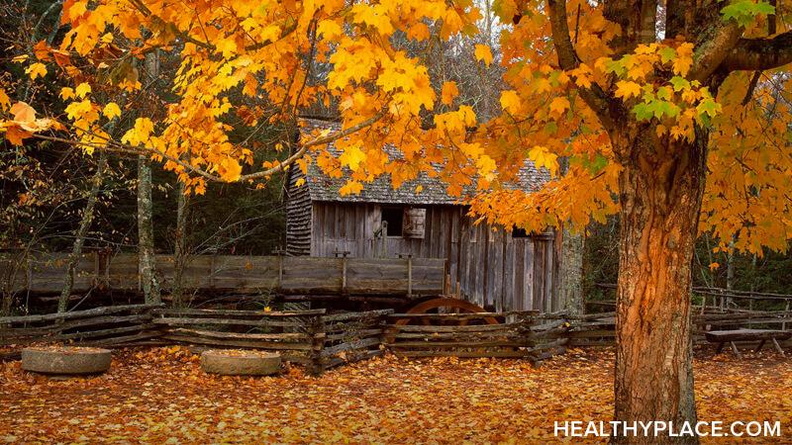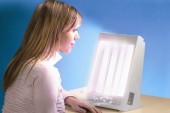Preparing for Seasonal Affective Disorder (SAD) with Light

In late September, the clouds replace the sunshine and summer becomes fall. The dates differ depending on where you live, but the impact on those who struggle with seasonal affective disorder (SAD), aka seasonal depression, are often felt before the date determines it.
I live in British Columbia, Canada, a beautiful place defined by the ocean and mountains, and it never stops raining. It rains approximately 165 days a year. I am quite certain this statistic is incorrect: it is closer to 200. It's September 5 today and the sky is grey: it threatens to rain. I get a bit panicky. I do not want this year to be like every year before: my mood slowly slipping as the rain pools on my patio and in my yard. My medication keeps me well enough, but the weather alters my mood negatively regardless of my state in recovery. Frankly, It frightens me.
What Is Seasonal Depression?
Those of us who suffer with seasonal depression are in good company: approximately 10% of people have experienced SAD at some point in their life. If you have experienced a major depressive episode, or suffer with a mood disorder, the statistic climbs to over 20%. I believe this number might be incorrect. I suspect it is a lot more.
I can tell you what SAD is in my life: a slow and painful lowering of mood, lack of appetite and energy. The symptoms mimic a major depressive episode but are not, usually, as severe. It is something I weather, pardon the horrible pun, as I do the seasons. However, the definition and cluster of symptoms is different for all of us and so a little research is important.
The Definition of Seasonal Depression Disorder
"Seasonal affective disorder (also called SAD) is a type of depression that occurs at the same time every year. If you're like most people with seasonal affective disorder, your symptoms start in the fall and may continue into the winter months, sapping your energy and making you feel moody. Less often, seasonal affective disorder causes depression in the spring or early summer."
For a long time, I struggled through the fall and winter months. I was still able to work and rise from bed: the human body, the mind, adapts to chemical changes. Even so, I always have to tweak one of my major mood stabilizers and antidepressants. It helps a little bit, but not enough. I still suffer, like many others with seasonal affective disorder.
Treating Seasonal Affective Disorder with Light Therapy
For years now, my psychiatrist has been telling me to use light therapy. The research shows that it works. I pictured myself sitting in front of something that looks like a facial self-tanning device. Should I wear sunscreen?
Last week, I decided I would give it a shot. I spent too much money on this special light box (I would pay anything for a life free of seasonal depression). I pulled it out of its box. The woman on the box is smiling into the light. It's curious looking. Like a large mirror that lights up. The same kind I use to apply my eyeliner, but with a $200.00 price tag. Because I have only been using it for a couple days, and granted the sun is still shining through my closed blinds (the writer in me avoids sun; this is ironic, I realize), some research on the light is important.
Light Therapy
"During light therapy, you sit or work near a device called a light therapy box. The b ox gives off bright light that mimics natural outdoor light. Light therapy is thought to affect brain chemicals linked to mood, easing SAD symptoms. Using a light therapy box may also help with other types of depression, sleep disorders and some other conditions."
ox gives off bright light that mimics natural outdoor light. Light therapy is thought to affect brain chemicals linked to mood, easing SAD symptoms. Using a light therapy box may also help with other types of depression, sleep disorders and some other conditions."
I e-mailed my psychiatrist this morning: "Is this the right time to turn on the damn light box?" She is used to e-mails like this and replied that, yes, it is. And so here I sit, artificial light shining in my face, writing these words and hoping it works.
Just as recovering from mental illness is not often symptom free, it's important, at the very least, to try everything we can to stay well. That being said: I will update you on the results. I also want to mention that you can usually obtain a light box for free, on a trial basis, from your psychiatrist if he or she believes it might work. And here's to hoping it does.
Let's talk about it. Has light therapy worked for you and would you be open to trying it?
APA Reference
Jeanne, N.
(2011, September 5). Preparing for Seasonal Affective Disorder (SAD) with Light, HealthyPlace. Retrieved
on 2025, December 26 from https://www.healthyplace.com/blogs/recoveringfrommentalillness/2011/09/recovery-defined-by-the-seasons-preparing-for-seasonal-affective-disorder
Author: Natalie Jeanne Champagne
Once regarded skeptically by the experts, seasonal affective disorder, SAD for short, is now well established. Epidemiological studies estimate that its prevalence in the adult population ranges from 1.4 percent (Florida) to 9.7 percent (New Hampshire). Researchers have noted a similarity between SAD symptoms and seasonal changes in other mammals, particularly those that sensibly pass the dark winter hibernating in a warm hole. Animals have brain circuits that sense day length and control the timing of seasonal behavior...':*
Sad has been a feature of my depression for most of my adult life. Each fall my mood would become much more depressed but would lift around the middle of December. While I don't like cold winters and grey cloudy skies do get me down, there is definitely a connection between the waning daylight in the Fall and my mood. I purchased a light box a couple of years ago but have not always used it. This year my psychiatrist recommended that I use it starting now in early September and so I have been using it the last few days and do you know what? I think I feel better!
Let's hope that this is true and that it works for me. Anything that might help is worth trying, so maybe if you, like me, suffer from a deeper depression in the fall you should try it too!
Hi, Philip:
Thank you for this comment. I too have always struggled with it. Here's to hoping this alternative treatment works! Keep me updated please:)
Natalie
Hi
I haven't tried a light box. I don't think my condition is seasonal.
However, I have a friend who it worked for. He's an Australian, used to lots of sunshine and the very strong light that's normal in that part of the world. He was working in London and found his mood dipped significantly during the long winter with its grey, short days.
Anyway, he was lucky to have a very enlightened employer who rigged up a light box for him to use at his desk while he worked. It did the trick.
So, if that's anything to go by, Natalie, stick with it!
Best of luck
Martin from http://toodepressed.com